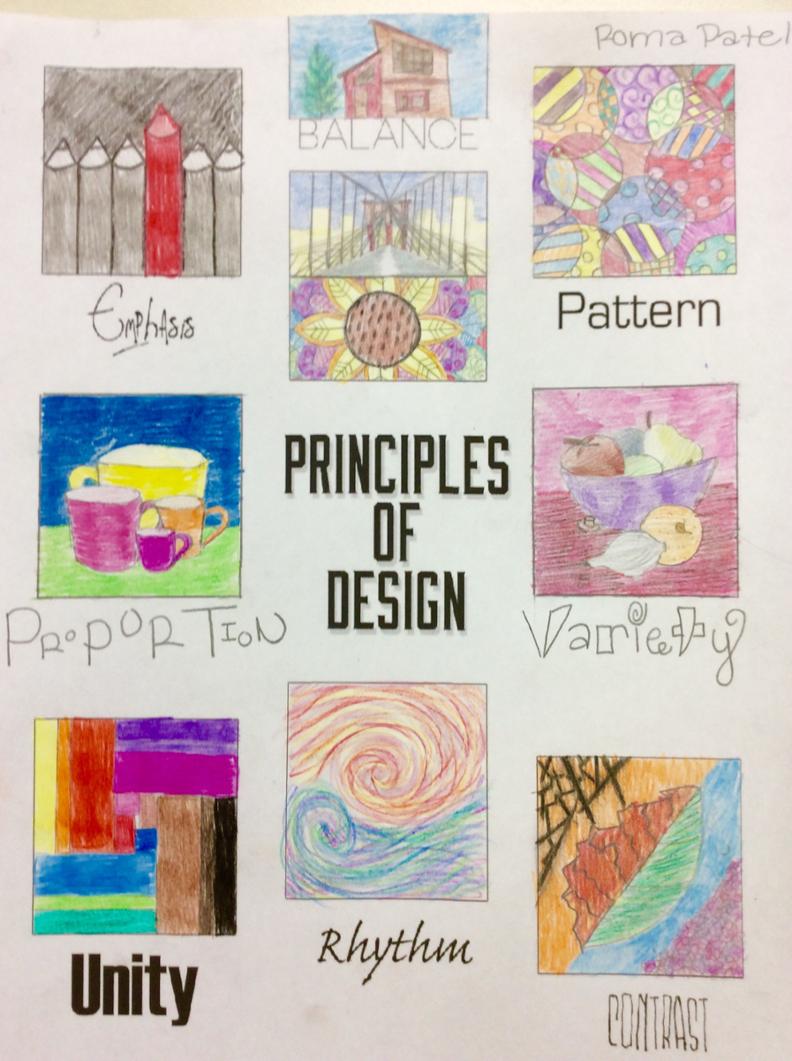
The road in this painting is the “third element” that helps create a relationship between the people in the foreground and the people in the background. On the right, the grouping of similar objects proximity was used to create unity within this painting.

See how the artist has repeated similar forms (ducks) and color (brown) throughout the composition? The painting on the left creates a sense of unity by the effective use of repetition. Using a “third element” such as a road to connect nearby elements with distant ones also helps create a relationship between the forms not grouped. How close together or far apart elements are placed in a composition suggests a relationship (or lack of) between otherwise disparate parts. Elements positioned close to one another are perceived as related, while elements farther apart are considered less connected. Proximity: Group related items together so that these particular items are seen as one cohesive group rather than a bunch of unrelated elements. Aligning other aspects to these axes creates a visual relationship that unifies them. When an element is placed in a composition, it creates an implied horizontal and vertical axis at its top, bottom, center, and sides. This helps to tie them together by creating an uninterrupted connection or union.Īlignment: Arranging shapes so that the line or edge of one shape leads into another helps creates unity in your design.

Continuity helps to create “family resemblances” between various forms. Repetition works to unify all parts of a design because it creates a sense of consistency and completeness.Ĭontinuity: Treat different elements in the same manner. Similarity: Try repeating colors, shapes, values, textures, or lines to create a visual relationship between the elements. Some easy ways to achieve unity in your compositions include: When nothing can distract from the whole, you have unity.Ī word of caution regarding unity: too much unity without variety is boring, and too much variation without unity is chaotic. The relationship of all the elements should be so strong it would hurt the design to add or remove any one thing. The final test of unity is one in which nothing can be added to or taken away without reworking the entire composition. When you feel your composition is complete, take a step back and observe it with an objective eye. When several people consistently understand the purpose and message you intend to portray, then unity has been maintained within your painting. You must be analytical about your work, maintaining objectivity at all times, and accept critiques from peers, friends, and family members.For example, if an element you consider adding does not contribute to the objective, it should not be added to the design. You must stay focused on achieving the objective and not deviate from it.You must have a clear objective in mind, one that you wish to communicate effectively.The design will evoke a sense of completeness and organization.The central theme will be communicated more clearly.

The individual elements within a composition do not compete for attention.The use of a basic shape that is then repeated throughout the composition will result in a well-organized design.

Using too many shapes and forms can result in a design that is disorganized, cluttered, and difficult to understand. When a composition has unity, the design is seen as a whole, rather than as individual elements within the painting.


 0 kommentar(er)
0 kommentar(er)
